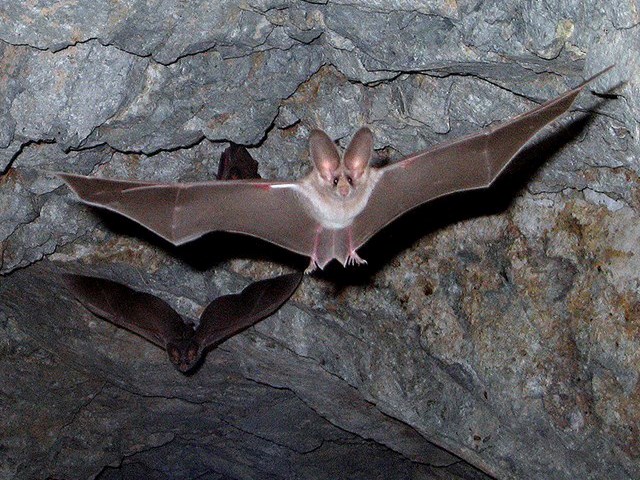
NPS photo
Abandoned mines also have positive aspects. Aside from their cultural values, they often provide habitat for wildlife including some rare or endangered species of bats, rodents, reptiles, amphibians, and birds.
Some bat species depend largely on abandoned mines because their natural habitats have either been destroyed or made useless. When conditions are suitable, bats can use mines for summer roosts, winter hibernation, nurseries for raising young, and stopovers during foraging and migration. Special mine closures such as "bat gates" preserve critical habitat while protecting the public from hazards underground.
Of the 45 bat species native to the United States, 29 rely on mines for a portion of their habitats.The continued survival of several bat species may depend upon the few mines and remaining caves that meet their habitat needs. However, the survival of North American bat species who depend on mines and caves for habitat is seriously jeopardized by White-nose Syndrome, first identified in February 2006 at a cave in New York. This disease has decimated entire colonies in many eastern states and Canadian provinces and it is migrating to the west. Extreme precautions and decontamination protocols must be used now for any work with bats. For more information about managing bat habitat in mines and white-nose syndrome, please see the websites, below.
Related Links
Last updated: October 28, 2022
